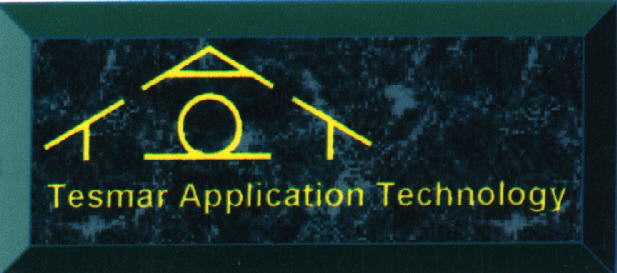|
Radiant Heating Contractor
or “Renaissance Man”?
I just spent a week
installing one of my new “retrofit” concepts for radiant floor heating in my
sister-in-law and her husband’s home in Michigan. I do that occasionally.
I seem to have a ready supply of relatives and friends that are willing
to act as pioneers and do their part to “add to technology” as it were.
I do one or two heating systems a year in order to validate my ideas and
to clear my head. Plus, doing the work gives me a lot of time to think.
This project involves a
major renovation. We are converting
a baseboard system to radiant panel in a finished home with something like 5,000
square feet of living space. About
half the space is on concrete. We
are doing it in stages so that the family, with two kids in high school and two
in diapers, can still live in the home. It’s
nice when the contractor can live in the home and be called “Uncle Tom” by
the two year old assistants that seem to enjoy hiding tools.
Anyway, one of the main
living floors in this home is a concrete floor that serves the large family
room, a bedroom, bath and laundry room. The
family room is a walkout design with a very large door wall component.
This is the room with the giant television and fireplace and view of the
lake and their swimming pool patio. Needless
to say, this is the focal point of all family activity.
This type of room needs carpeting and radiant floor to accommodate the
family lifestyle.
The challenge, as I saw it,
was to be able to heat the floor rapidly in response to demands of heat loss
through the large windows. Lake
views simply don’t encourage the use of draperies.
Now, even the best windows are like a screen door on a submarine when it
comes to keeping the heat in. These
windows offered an R-value of about R-3. The
indoor temperature was selected at 70 degrees with an outdoor design temperature
of around 10 degrees. This made the
difference in indoor/outdoor temperature 60 degrees.
Dividing 60 by the R-Value results in a design heat loss of 20 Btu per
square foot. There were a lot of
square feet of glass. When the sun is shining, you can get up to 60 Btu per square
foot solar gain through these South facing windows.
The sun goes down rapidly in the winter so you can see a 60 Btu per
square foot gain convert to a 20 Btu per square foot load in just a matter of a
couple of hours. That can create
some control problems in high mass systems.
In this family room area, I
wanted to provide a very responsive radiant floor and still remain within a
reasonable budget. I selected a
system that I’ve been working on for some time that involves installing a wood
system on top of the existing floor, and remaining within 1 ½ inch rise.
Wood floors on concrete are very desirable because they give you a little
bounce and they improve walk ability. I
decided to use ½ inch nominal PEX ( because it’s the most practical size for
any room over 200 square foot in area) and aluminum heat transfer plates to
bring the temperature to the surface as quickly as possible in order to meet the
accelerative loads.
The wood floor (commonly
called a “sandwich”) construction method requires a minimum of 5/8 inch
nominal subfloor. I decided use an
OSB product of ¾ thickness because I could afford the height and I wanted
sufficient material thickness to accept deck screws for fastening down the
underlayment on top of it. Here’s
where it gets interesting. I was
able to buy the 4X8 foot panels at a local “Big Box Retailer” that is known
nationwide for less than $11 a panel. That equates to less than 35 cents a
square foot. The beauty of the sale
was that they advertised that I could get three free cuts on any panel
purchased. They have a wonderful
vertical saw system for ripping panels. I
had each panel ripped to an 11 1/8 inch width for my installation. That way, I only had to handle small pieces and could do so
unassisted. I didn’t even have to
clean up the sawdust.
I used aluminum heat
transfer plates of my own design. Each
plate is 18 inches long and 4.5 inches wide.
I space them a minimum of 3 inches apart near the outside walls and much
wider near the interior. These plates are meant to accept a ½ inch nominal pipe
that snaps into the groove. Each
plate serves a minimum of 2 square feet and costs about $1 each.
That equates to a maximum of 50 cents pre square foot.
I installed the ¾ inch OSB
11 1/8 inch planks around the perimeter of each room. I used a suitable panel to concrete adhesive and an ingenious
nailing system. I’ve always
looked for inexpensive, quick and effective methods of construction.
My good friend Jim Prokapowicz (ultimate contractor) showed me method of
installing wood onto concrete that beats anything I’ve ever seen.
Essentially, you buy or rent a good hammer drill, not one of those cheap
ones; I’m talking a good one. Then
you get some Tapcon ™ bits (you will end up breaking them from time to time).
You glue the plank to the floor and then drill through the plank into the
concrete. Finally, you take one of
those old time concrete cut nails and drive it into the hole with a 4 pound
hammer. The fastening is cheap and
holds like mad.
Between the planks I would
place a ¾ inch spacer until the next plank was installed.
This gave me the proper spacing for the aluminum plate.
At the ends I made radius cuts with a saber saw.
I tried a router for a while but thought that it made too much noise and
too big a mess. I left room for
expansion of the pipes at the ends. I
laid out the floor in a manner consistent with the heat loss by paralleling the
exterior walls and laying a serpentine pattern inward.
This is a very flexible method of laying out the tubing.
You can do exactly what you want without compromise.
Once all of the planks were laid out I installed the aluminum plates in
the grooves by stapling with one staple on one side and in the middle of the
plate. Over the years I’ve found that too many staples can cause
“oil canning” noise when heat is applied.
I then snapped the tubing into the plates and stapled the other side of
the plate, also in the middle. Then
I was ready for the underlayment.
I chose high density
particle board underlayment of ½ inch nominal thickness.
I could have glued and screwed it down but I opted to used deck screws.
I purchased a magazine system for my screw gun and the process was very
quick. In areas where there would
be tile, such as the bathrooms and laundry rooms I installed a cementitious
board (Durock). I used glue and
screws on the cement board. The entire project went in like a dream.
I’ve done similar systems
in the past where I couldn’t afford the extra height and I used a masonite
type underlayment. They worked great, even when ceramic tile was placed over the
masonite.
So here’s the deal.
As I was involved in this installation, a thought began to develop with
me. I worked on the project for
days using saws, drills, staplers and screw guns before I picked up anything
that looked like it belonged in a plumber’s tool box.
A fair amount of materials that I purchased came from lumber companies
and big box retailers (sorry). A
radiant heating guy really needs to be a “Renaissance Man” in order to be
effective. A lot of the system
suppliers might be targeting the wrong audience when trying to push their
products on the market. In an
effort to compromise, they are sending out “Designer Plywood” at prices that
would make Bill Gates choke.
This project had a material
cost for tubing, aluminum plates, subfloor, underlayment, glue, staples, screws
and a half dozen drill bits (It took me a while to learn not to bear down) of
less than TWO DOLLARS per square foot. That
does leave some room for those things that I consider essential to a good
project, such as adequate design services and conscientious labor.
What I’m really saying is
that, in order to be competitive, the contractor needs to be practical.
The industry needs to develop the low cost producers and limit their
sales to the products that they manufacture.
This whole “works in a drawer” concept only adds layers of profit
takers. Tubing and heat plant
manufacturers already sell too many products that they buy on the market and
re-sell to the contractors with at least one layer above what is necessary.
Project managers, system
sellers and wholesalers need to look at who is doing the work.
Often, as in the case of this project, much of the preparatory work is
better done by someone with a good grasp of working with carpentry tools and
probably doesn’t own a tubing cutter.
Of course there are a lot
of us out there who truly love to buy tools and don’t shy away from any
challenge.
Tom “The Tool Man”
Tesmar.
Tom Tesmar
is an independent consultant in the radiant heating industry. Tesmar Application
Technology specializes in a wide variety of activities related to the design and
installation of hydronic radiant panel heating systems.
With over 20 years experience in every level of the industry, Tom is
available for:
Design
and installation manual development
Computer
design program development
Complete
Seminar Packages
Plan
Review
Design
consultation
System trouble shooting
Mailing
Address:
Tesmar
Application Technology
595 Tower
Road
Hudson,
Wisconsin 454016
Phone:
(715) 381 2967
Fax: (715)
2965
E Mail:
Tom@Tesmar.com
Web: www.tesmar.com
|

